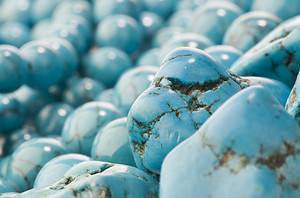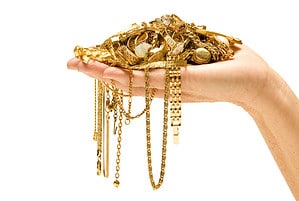There are over 5,000 known types of minerals. Just a few minerals make up most of the rocks we see, though: feldspars, amphiboles, quartz, olivine, garnet, micas, calcite, and pyroxenes. The possible combinations of these minerals are endless. Rocks also differ based on how they were formed. Igneous rocks form out of cooling lava or magma. Sedimentary rocks develop from eroded grains of other rocks and organic matter. Metamorphic rocks are the third main classification. These started out as other types of rock but were changed by high heat and pressure. In this article, we’ll list 30 types of rock with pictures and a brief description to help you identify them.
1. Andesite
Andesite is a gray or brown extrusive igneous rock. The name comes from the Andes Mountains, where there are abundant deposits of andesite. It makes a good material for construction, landscaping, and other decorative purposes.
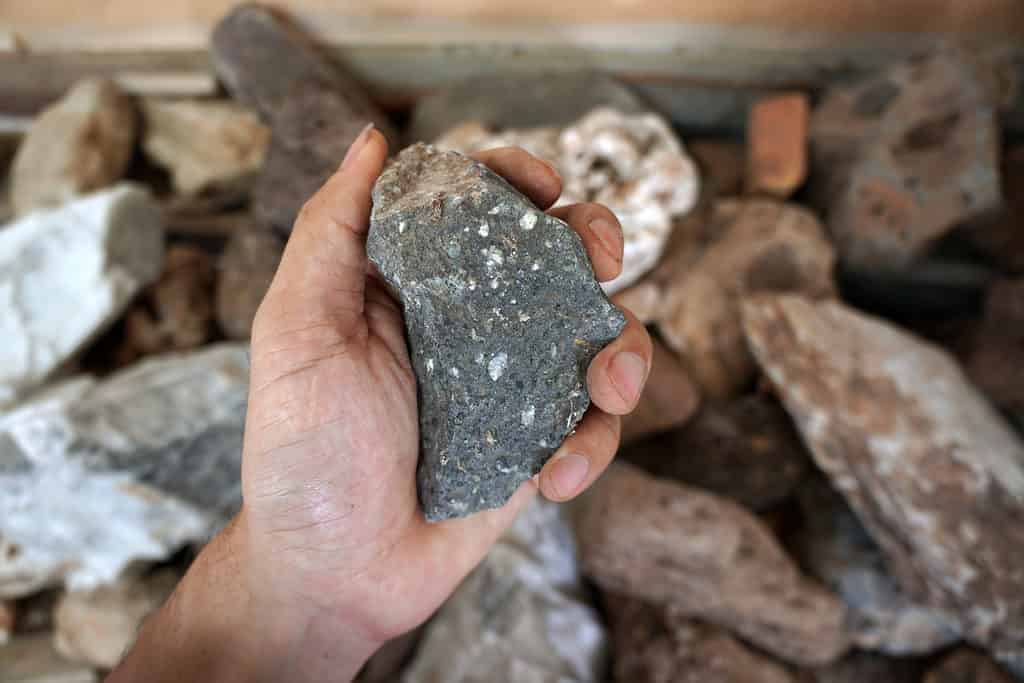
Andesite is abundant in the Andes Mountains.
©Yes058 Montree Nanta/Shutterstock.com
2. Anthracite
Anthracite is a high-quality form of coal that is hard, pure, and has a slight metallic sheen. It is composed of 86-97% carbon, the highest carbon content of any form of coal. Flames from burning anthracite are short, blue, and smokeless. Anthracite is considered a metamorphic rock.
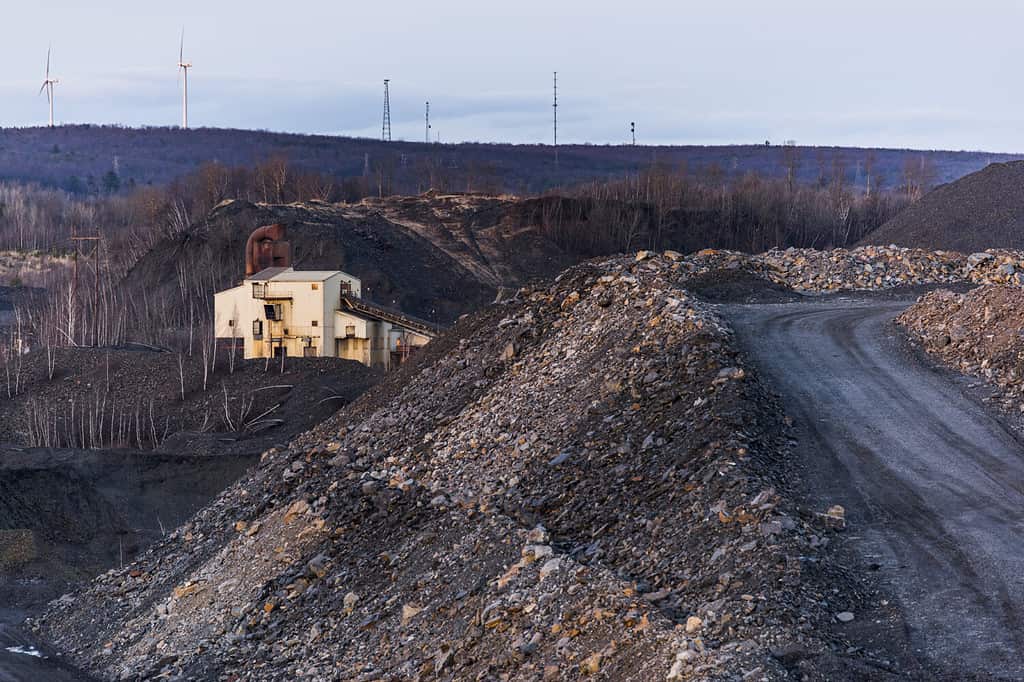
©The American Explorer/Shutterstock.com
Anthracite is the highest grade of coal. It has a high energy content and few impurities.
3. Basalt
Basalt is an extrusive igneous rock, which means it forms from cooling lava on the earth’s surface, not from magma inside the earth. It’s the type of rock Hawaii, the ocean floor, and much of the Moon are made of. It is made of feldspar, olivine, amphibole, and pyroxene. You can identify it from its reddish brown to black color and small holes where gas escaped while the lava was still hot.
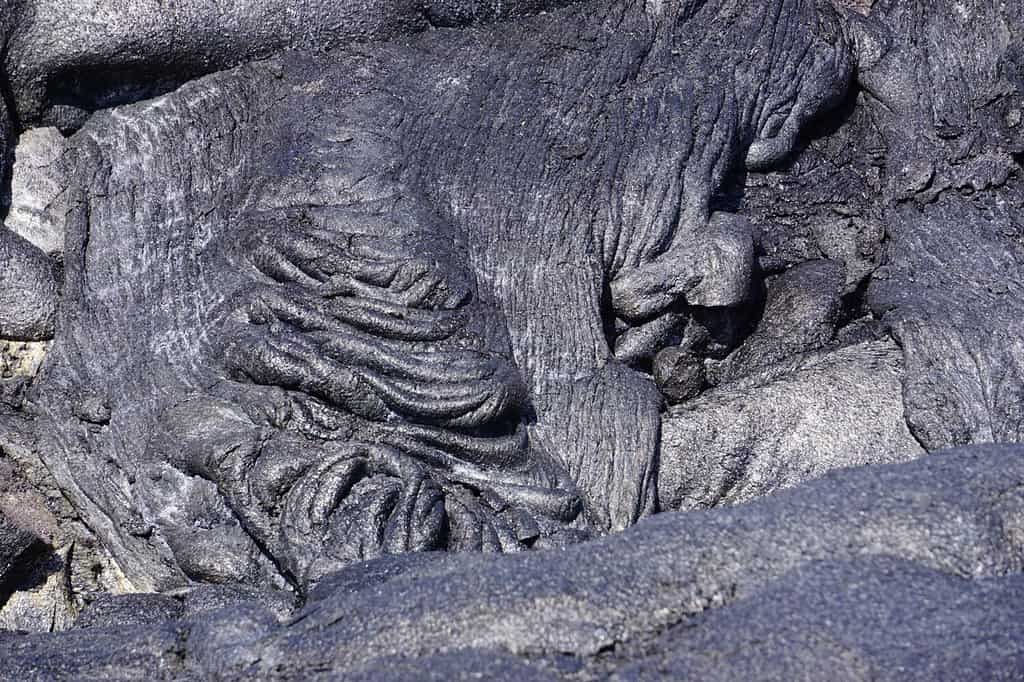
Basalt is formed from cooling lava on the earth’s surface.
©Iva photos/Shutterstock.com
4. Breccia
Breccia is a kind of sedimentary rock made of sharp, angular fragments of rock and gravel. Piles of rubble that consolidate into breccia can be formed in different ways. Rock may fracture and accumulate at the bottom of cliffs, in areas where volcanoes have erupted explosively, in places where fluid fractures a mass of rock, or as a result of a meteor impact. Breccia is classified as “poorly sorted” or “well sorted” based on whether the rock fragments are different sizes or about the same size.
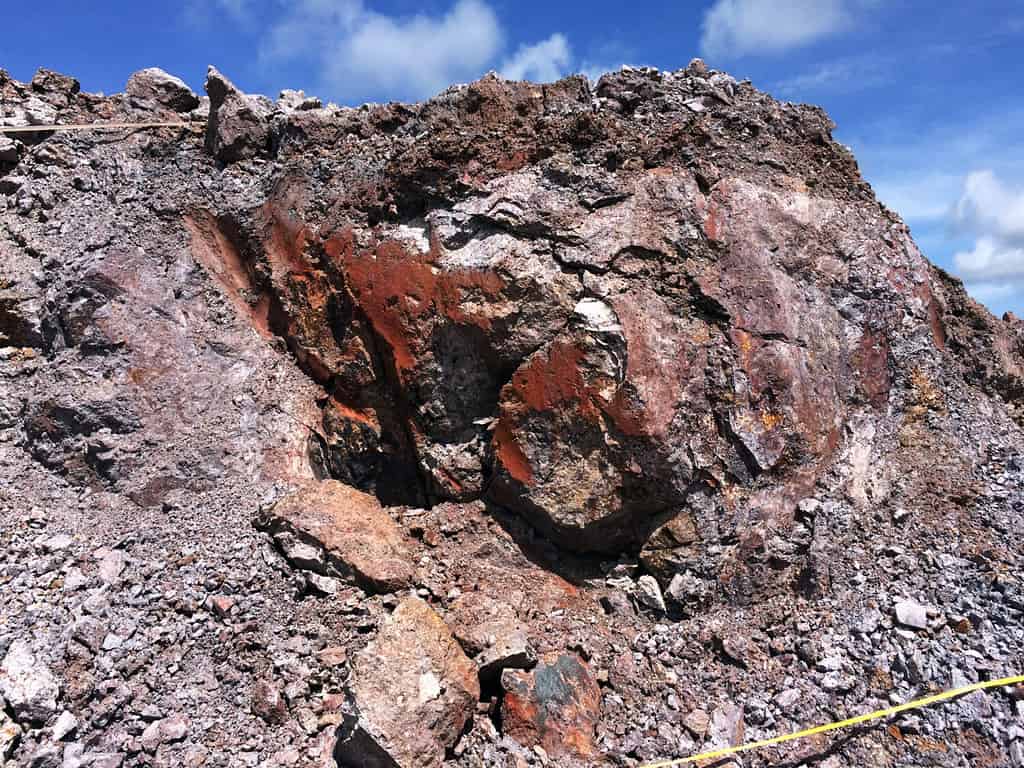
Breccia is sedimentary rock formed from loose broken fragments of other rocks.
©faqihalfyan/Shutterstock.com
5. Chert
Chert is a type of sedimentary rock made of quartz crystals. It usually looks like a chunk of sediment with some smooth, waxy-looking surfaces. It fractures easily, leaving sharp edges. In color, chert is usually brown, grey, or shades of red or green. Sometimes it is translucent, but most kinds of chert are opaque.
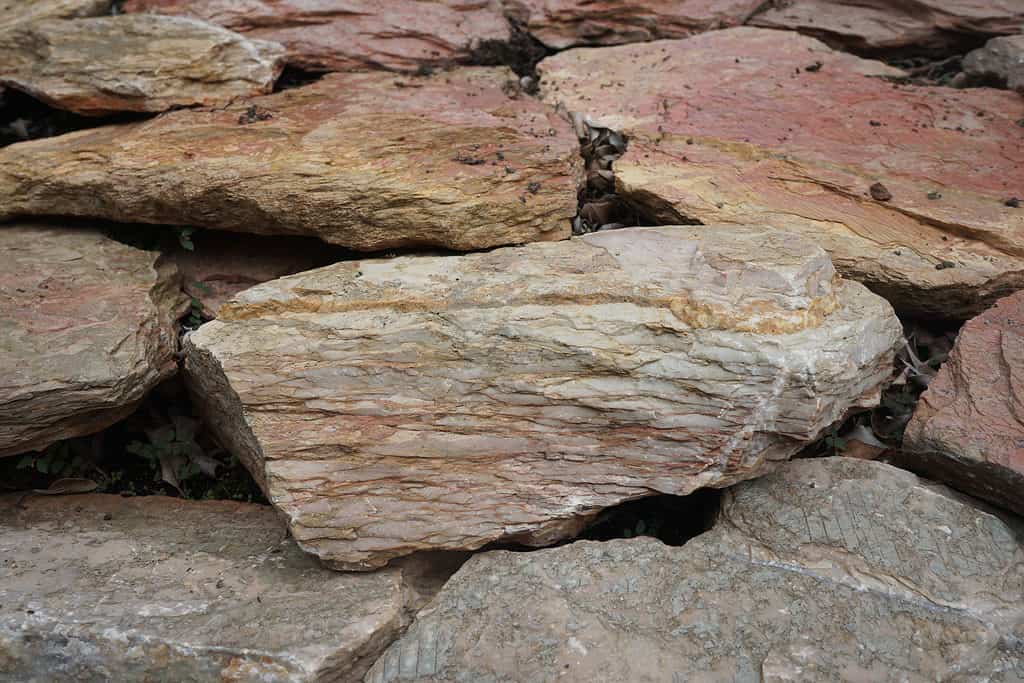
Chert, made of quartz crystals, can have red and green shades of color.
©Yes058 Montree Nanta/Shutterstock.com
6. Dacite
This is an igneous rock composed mainly of silica but also has a low percentage of alkali metal oxides. The two most common minerals in dacite are plagioclase feldspar and quartz. Builders can use dacite in projects that require loose aggregate stone. They don’t mix it with concrete, though, as its silica content reacts poorly with concrete.
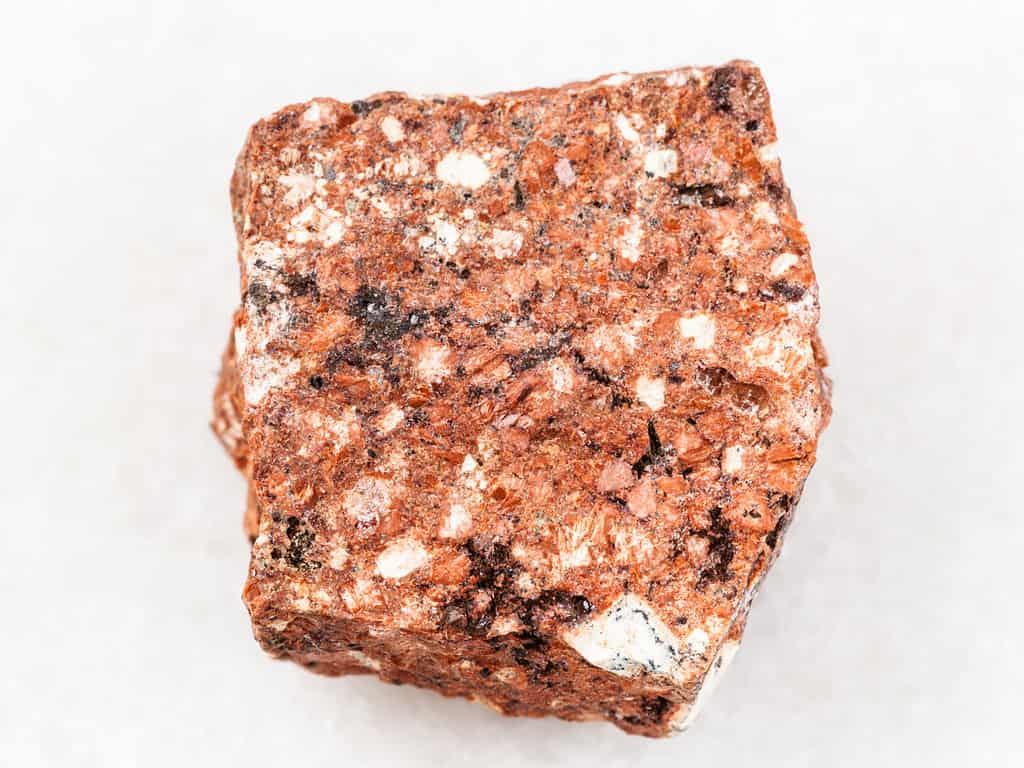
Dacite is used as a loose aggregate stone in construction or landscaping projects.
©vvoe/Shutterstock.com
7. Diorite
Diorite is a rock made of white plagioclase feldspar and black hornblende. This creates a black-and-white color. Diorite is similar to granite, but one way to tell the difference is that true diorite does not have quartz crystals in it as granite does. Rock hounds often call rocks “diorite” that are technically something else. Something that looks like diorite but does have quartz crystals in it may be quartz diorite or tonalite. If it has more alkali feldspar than normal diorite, it is called monzonite.
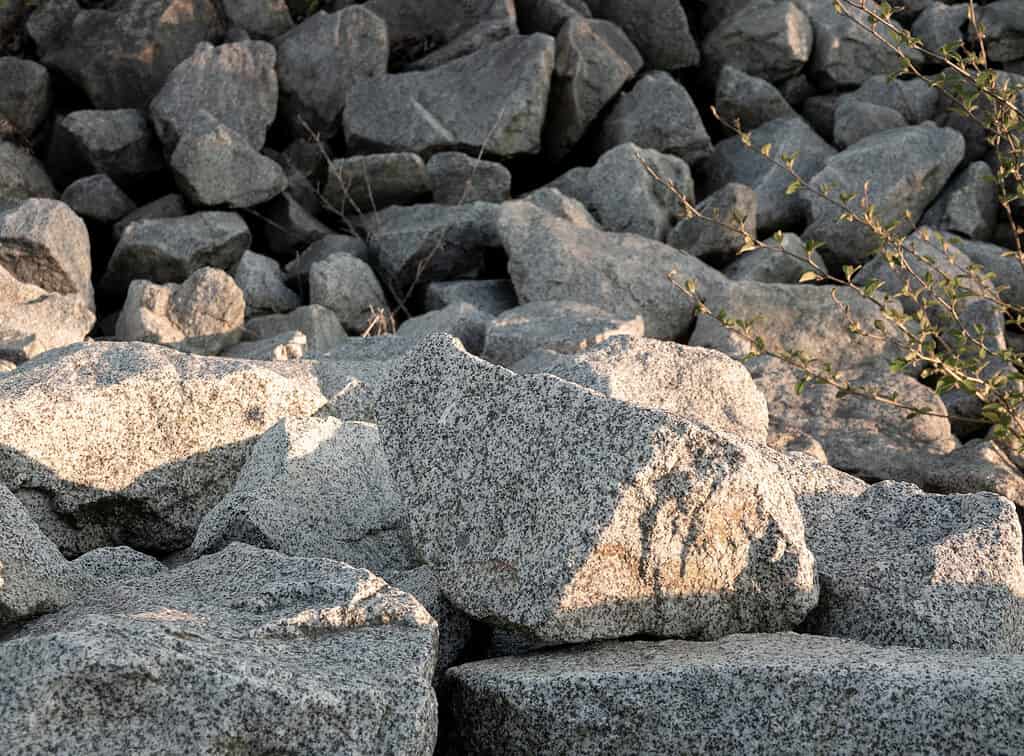
True diorite is relatively uncommon. Many similar-looking rocks have higher quartz or feldspar content than diorite.
©Shutter Wolf/Shutterstock.com
8. Dolostone
Dolostone is a sedimentary rock formed from dolomite and fossils. Over time it can metamorphose into marble. It’s recognizable as a grey rock with visible fossils that are often the same color as the rock it is embedded in.
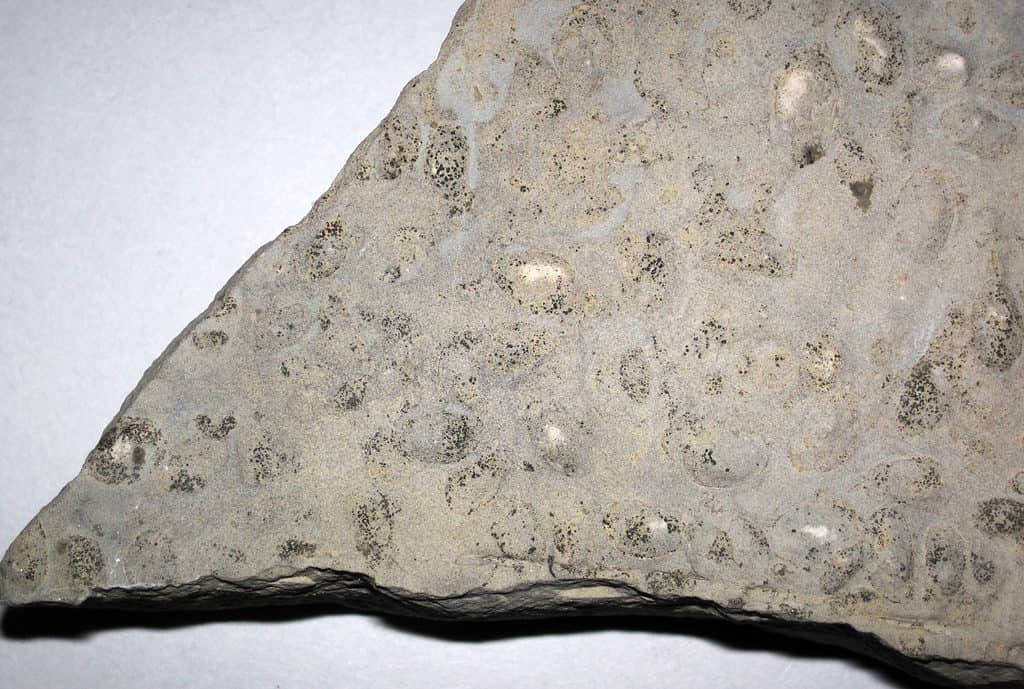
This sample of dolostone includes fossilized ostracods (small crustaceans) from the Silurian Era.
©James St. John / Flickr – License
9. Eclogite
Eclogite rocks can be igneous or metamorphic. They crystallize out of basaltic magma under high pressure inside the earth. They are made mainly of green pyroxene and red garnet with traces of other minerals like rutile. Sometimes they’re initially mistaken for meteorites because they have a similar composition and are often found as foreign inclusions in other rock layers.
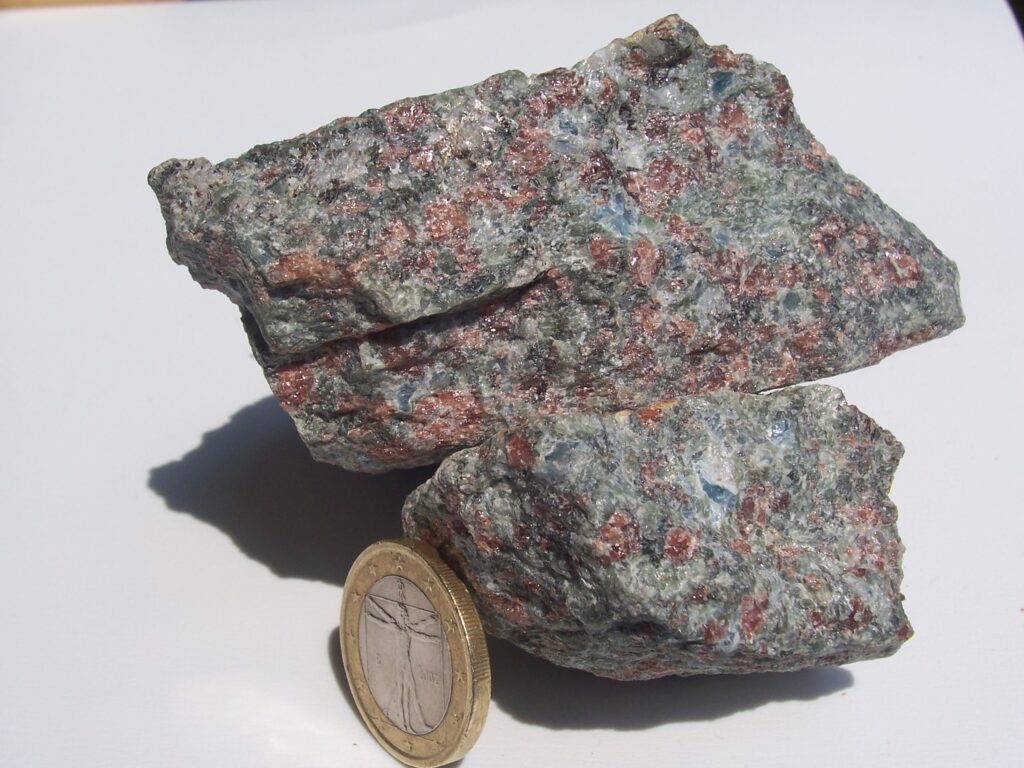
Eclogite has characteristics comparable to meteorites, but it forms in the earth’s mantle.
©
10. Gneiss
This type of rock has alternating light and dark bands made of quartz, mica, and feldspar. It is a metamorphic rock made of granite and gabbro. Gneiss forms only when the original rocks are subjected to the high temperatures and pressures that only occur 25 miles beneath the earth’s surface!
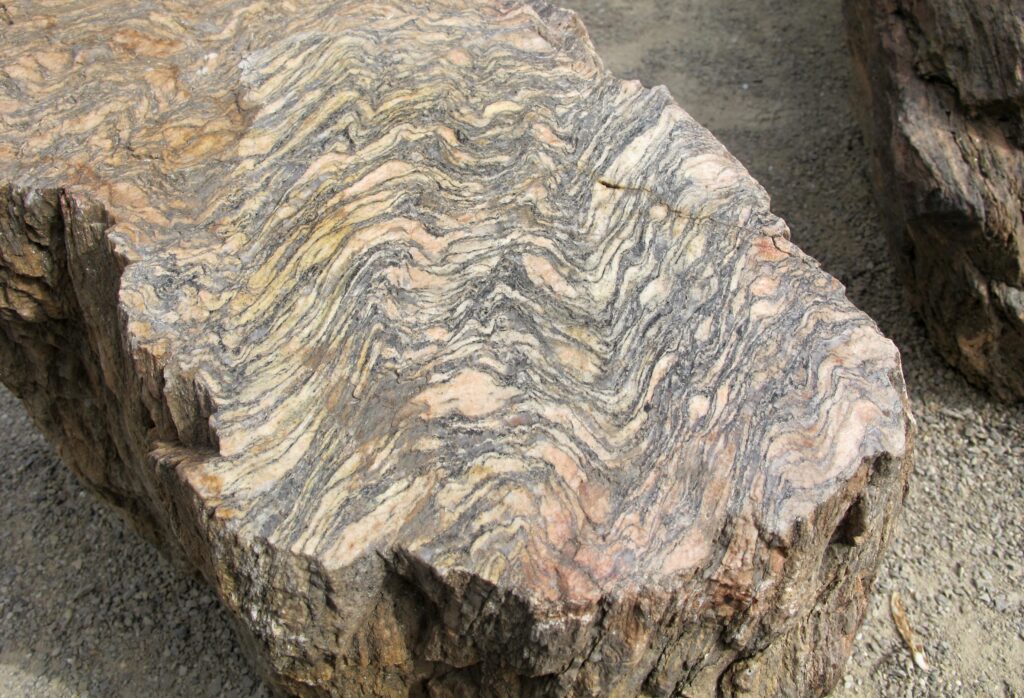
Gneiss, a metamorphic rock, forms in the earth at a depth of 25 miles or more.
©
11. Granite
Granite is an intrusive igneous rock, forming when magma cools slowly and forms large crystals. The minerals found in granite are feldspar, hornblend, mica, and quartz. You’ll notice crystals of pink feldspar, black mica, and white or grey quartz in granite samples.
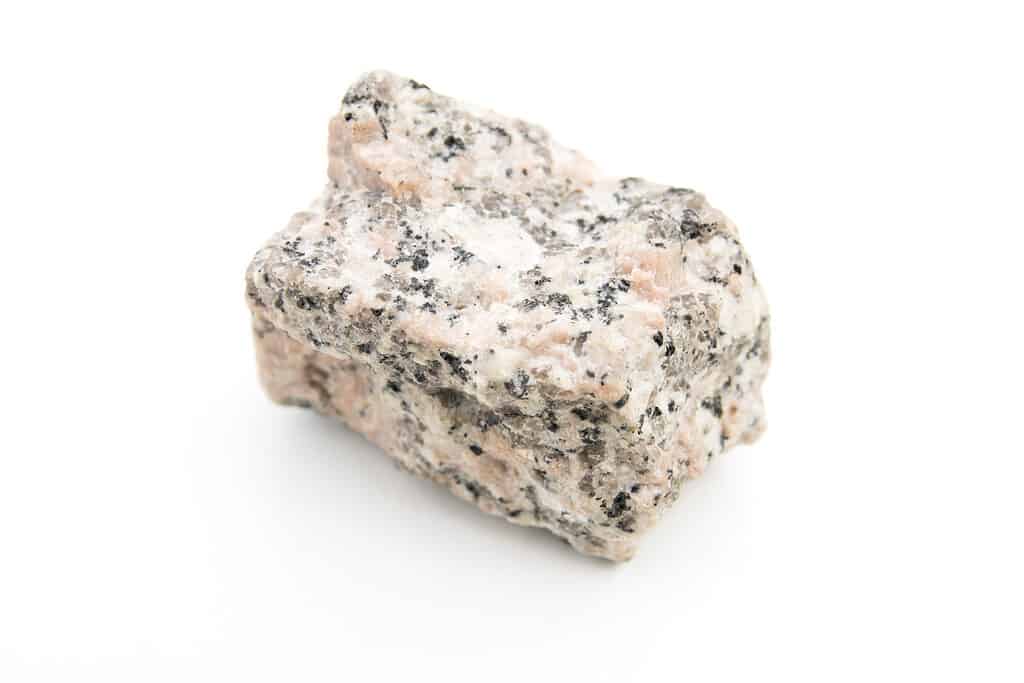
Granite is a durable and beautiful material often used for construction purposes.
©michal812/Shutterstock.com
12. Ignimbrite
Like rhyodacite, ignimbrite is a rock that forms in pyroclastic flows. It forms out of ash and fragments of pumice, glass, and crystal. Ignimbrite comes in an assortment of colors depending on the exact composition of the sample. Some of the typical colors it comes in are black, grey, white, beige, pink, or brown.

©www.sandatlas.org/Shutterstock.com
13. Limestone
This common sedimentary rock consists mainly of calcite. It is off-white to grey and has a chalky texture. It can form when calcite precipitates out of seawater and settles on the ocean floor. Another way it forms is from the shells and skeletons of aquatic animals.
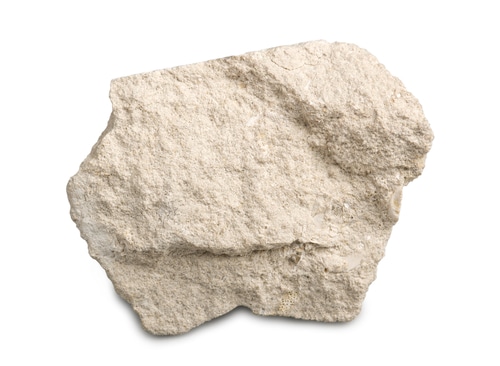
Limestone can form from the shells and bones of marine animals, but it does not have visible fossils in it.
©Aleksandr Pobedimskiy/Shutterstock.com
14. Marble
Builders and sculptors from ancient times to the present have favored marble for high-value projects. This is both because it is easy to carve and because of its beautiful coloration. It’s made of light-colored calcite crystals that come in many different shades and has a slight sparkle. Marble is a metamorphic rock formed from limestone or dolostone.
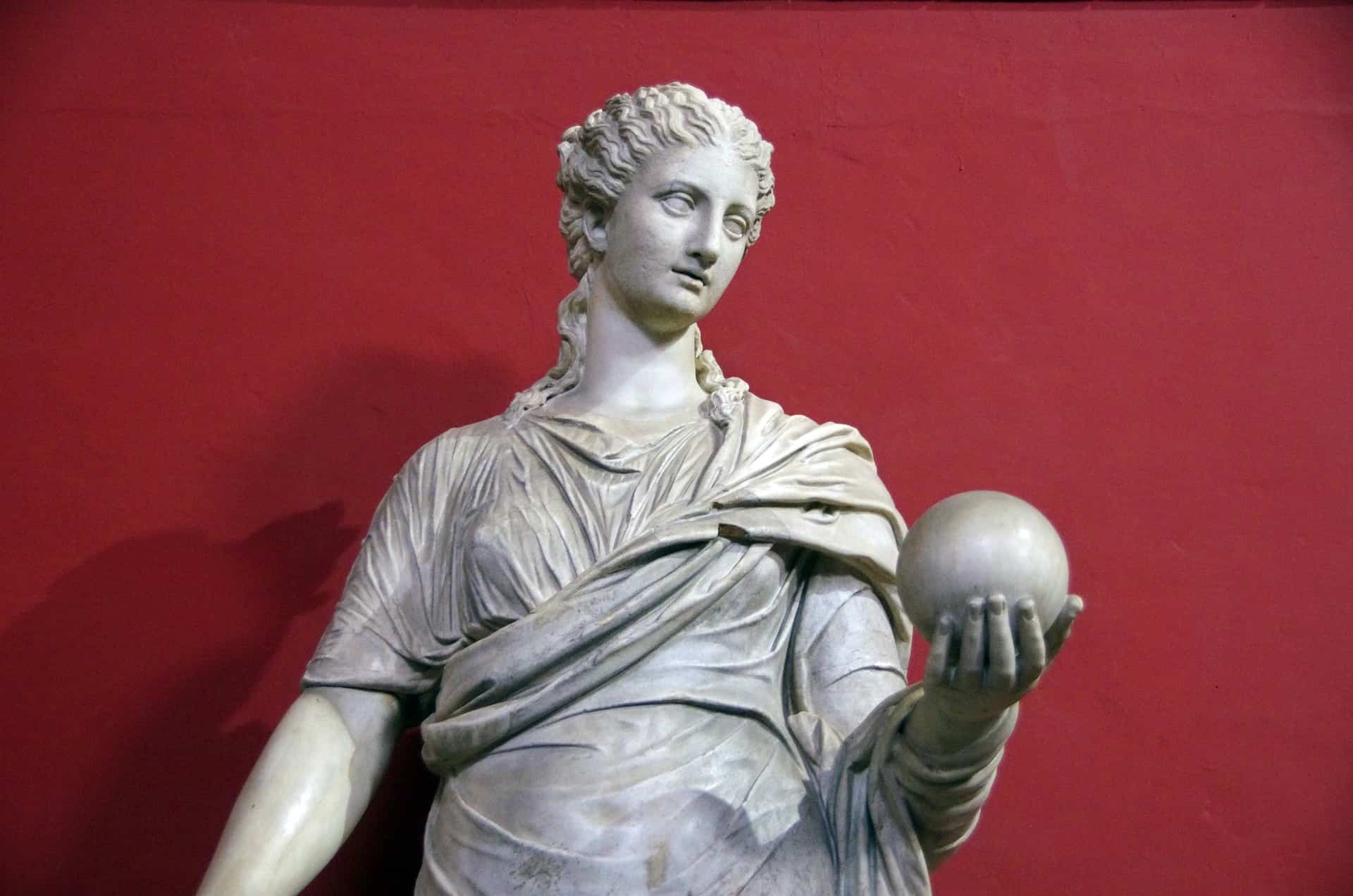
A marble statue at the Vatican
©
15. Obsidian
Obsidian is one of the most beautiful and interesting extrusive igneous rocks. It cools from volcanic lava so quickly that it doesn’t have time to form large crystals. The result is smooth black volcanic glass. It is as sharp as glass, too. Shards chipped from made weapons, utility knives, and even surgical-grade medical instruments for premodern people.
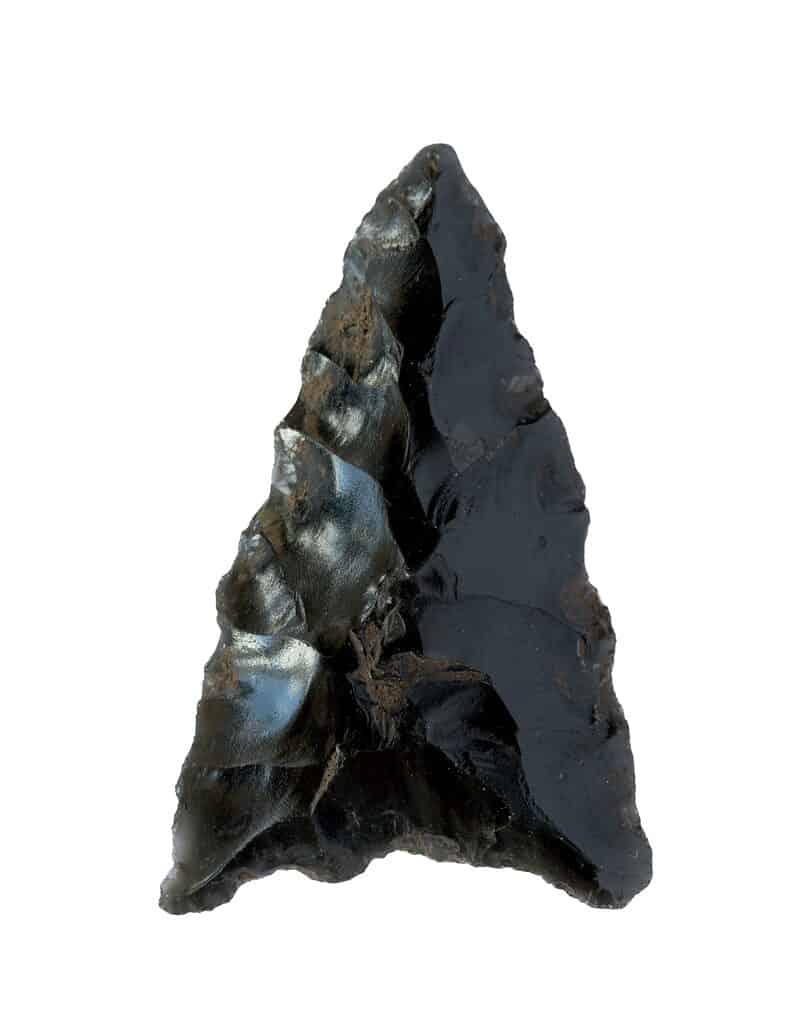
Obsidian breaks with sharp edges, making it perfect for creating sharp-edged tools such as knives and arrowheads.
©Dima Moroz/Shutterstock.com
16. Peridotite
Peridotite is rich in olivine, pyroxene, magnesium, and iron. This makes it a lot denser than most other types of rock. It’s a common part of the ocean bed and is the main type of rock in the upper mantle. Peridotite is classically colored bright green with specks of black but specimens can change color when weathered or have other mineral traces that make them appear yellow, blue, brown, or red.
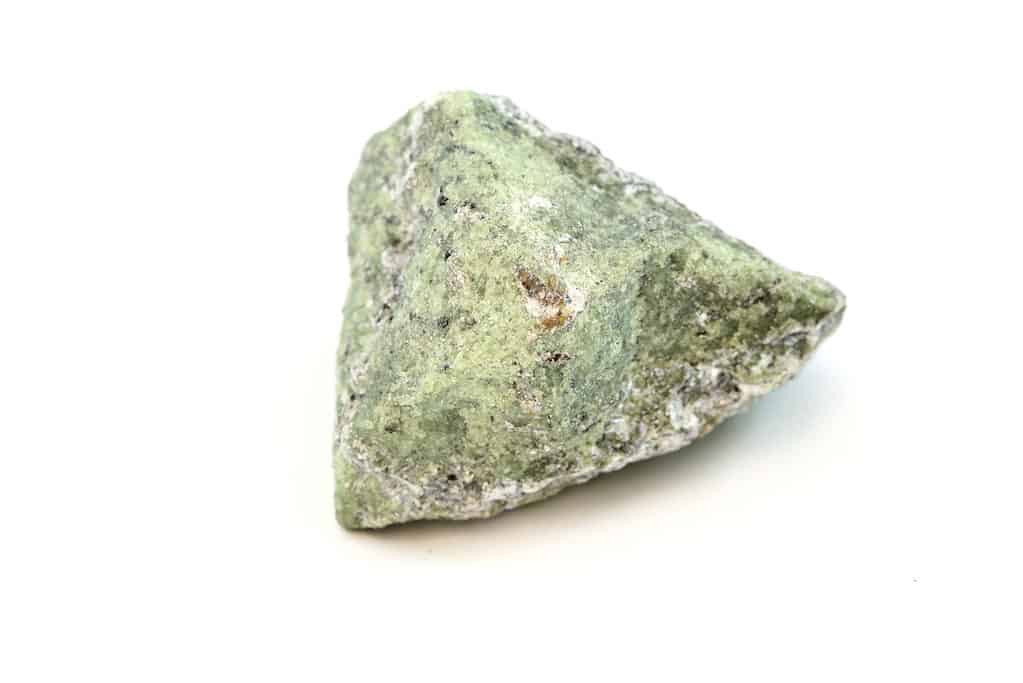
©Tyler Boyes/Shutterstock.com
17. Perlite
Perlite is a form of volcanic glass that forms out of hydrated obsidian. When heated up to a high temperature, perlite expands up to 16 times larger and turns bright white. It’s a low-density and inexpensive material that has many different commercial and industrial uses. A few examples of these are: swimming pool filtration, as an additive to agricultural soil, as a component of insulation, ceramics, and explosives, in cosmetics, and in biotechnology applications.

One common use of perlite is as an additive to potting soil to help with drainage.
©iStock.com/CemSelvi
18. Phonolite
Phonolite is an uncommon extrusive igneous rock. Its most interesting characteristic is that when it is struck with a hammer, it sounds metallic. This is why one of its common names is “clinkstone.” Similarly, the ancient Greeks called it “sounding stone.”
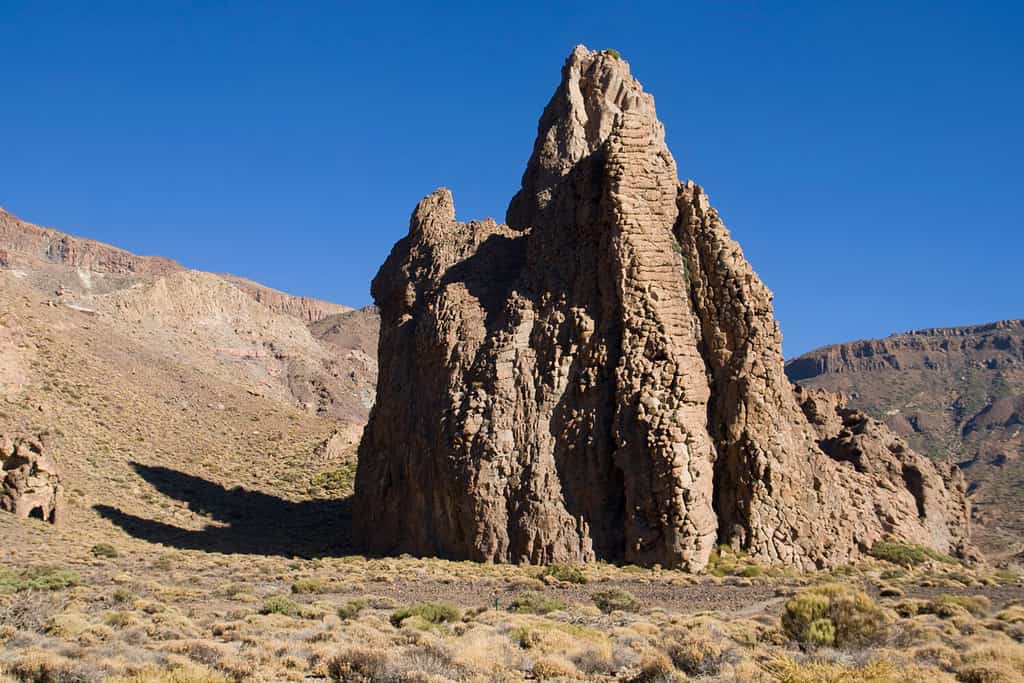
La Catedral (The Cathedral) is a dome of phonolitic rock in the Canary Islands.
©Santi Rodriguez/Shutterstock.com
19. Pumice
Pumice is an igneous rock that forms when gas-filled lava cools quickly. As the gas escapes, it leaves behind a rock as full of holes as Swiss cheese. Its density is less than water, so it can float on the surface of the ocean before it gets completely waterlogged and sinks. Pumice is valuable as an ingredient of abrasive cleaners and sandpaper.
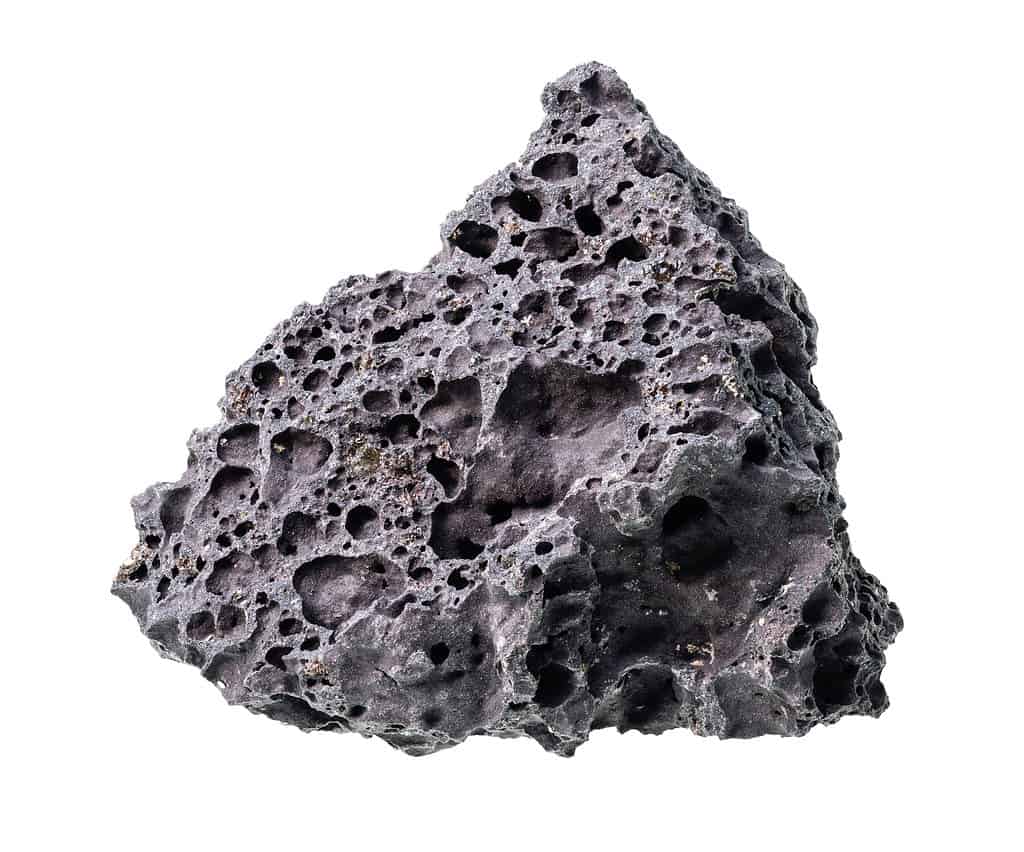
One of the most surprising features of pumice is that it is light enough to float on water.
©KrimKate/Shutterstock.com
20. Quartzite
Quartzite is a metamorphic rock formed out of recrystallized quartz grains in sandstone. It is a hard stone that is used as a raw material for glass and ceramics. It’s a light grey or white stone with a medium-grained texture.
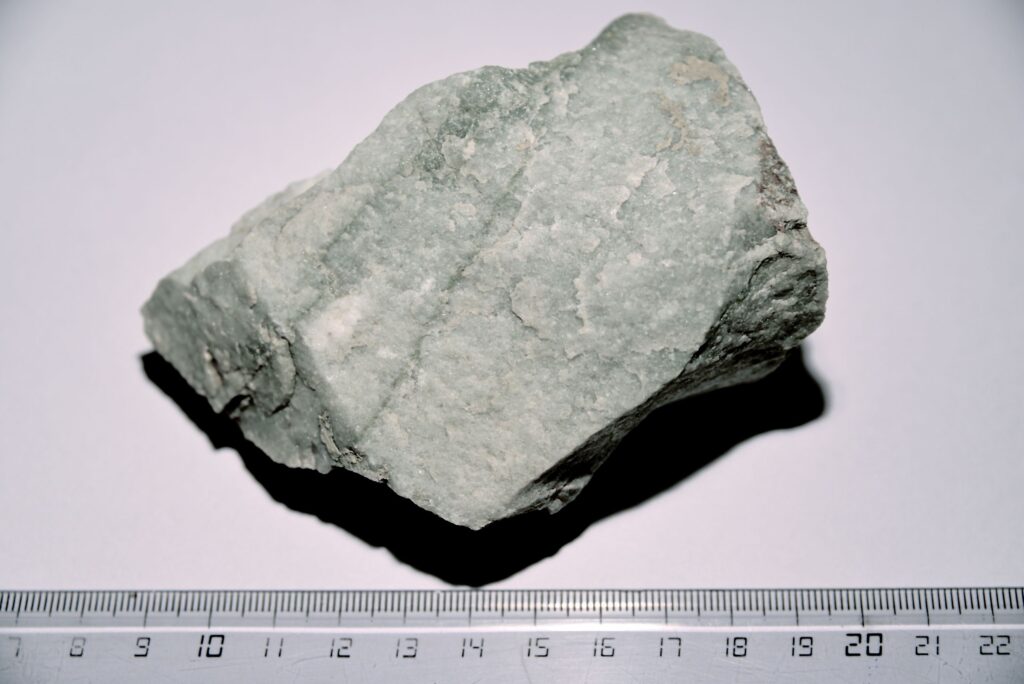
Manufacturers use quartzite as a key component of glass and ceramics.
©
21. Rhyodacite
Rhyodacite forms when lava in pyroclastic flows cools quickly and forms rocks rich in silica and low in alkali metal oxides. It consists of anywhere from 20-60% quartz. Some of the commercial uses of rhyodacite are in landscaping, as road aggregate, and even for cemetery markers.

One use of rhyodacite is as a stone for cemetery grave markers.
©ARadoman/Shutterstock.com
22. Rhyolite
Rhyolite is an extrusive igneous rock. The minerals forming it are hornblend, mica, quartz, and feldspar. It has a fine-grained texture and is pinkish-grey. Sometimes it has dark streaks. Pumice and obsidian are two forms of rhyolite.
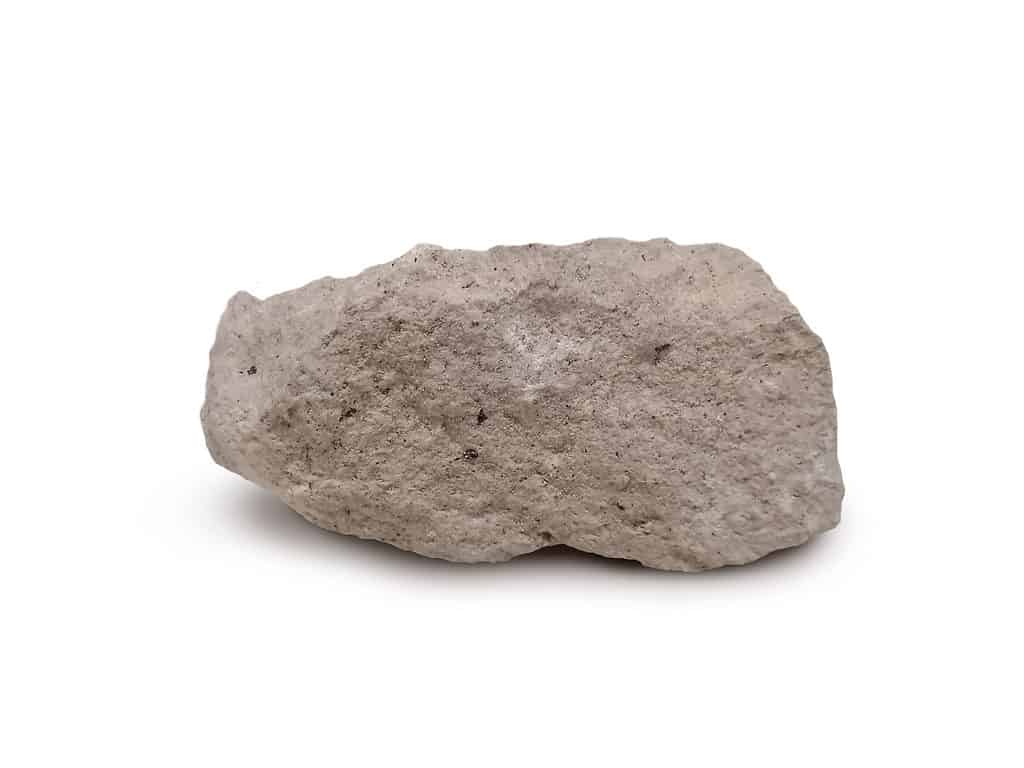
Rhyolite is a volcanic rock with a fine-grained texture.
©Yes058 Montree Nanta/Shutterstock.com
23. Sandstone
Sandstone is a common sedimentary rock that consists mainly of feldspar or quartz. As other rocks erode, rivers deposit grains of sand from them in areas where the water is moving more slowly. Over time, deep layers of these deposits, fused together by clay, solidify into layers of rock. Sandstone is most commonly tan or grey, but when other minerals are present it can have other colors.
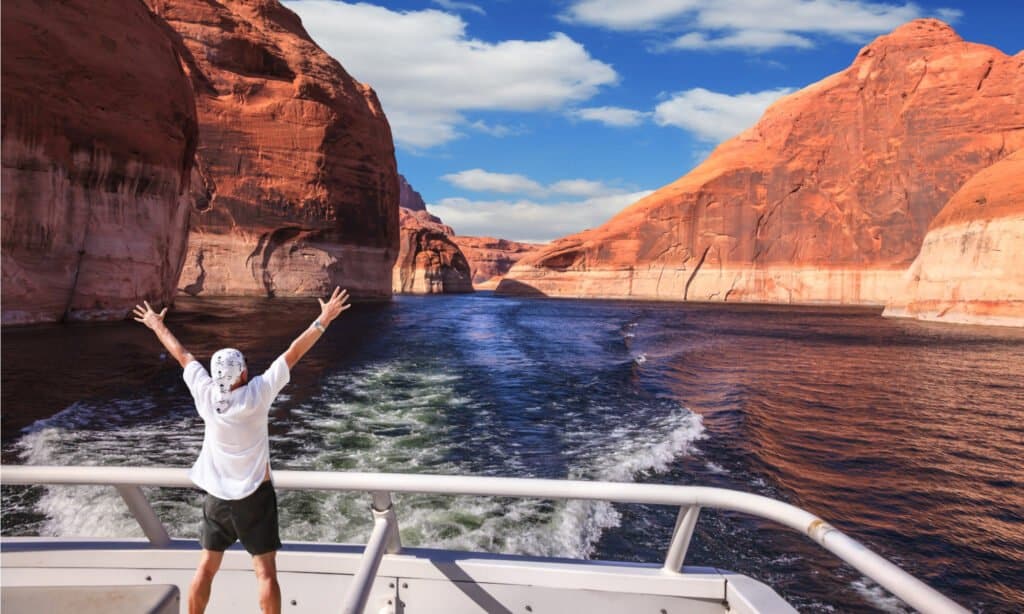
These red cliffs at Lake Powell, Arizona, are sandstone. The red color comes from iron oxide (rust).
©kavram/Shutterstock.com
24. Scoria
This type of rock forms from gobs of lava thrown into the air by a volcano. It cools in the air on the way to the ground, leaving behind a rock full of holes from escaping gas bubbles. Although it is similar to pumice, the big difference is that scoria is denser than water and will immediately sink. Scoria is useful as a material for concrete and the production of cinder blocks.
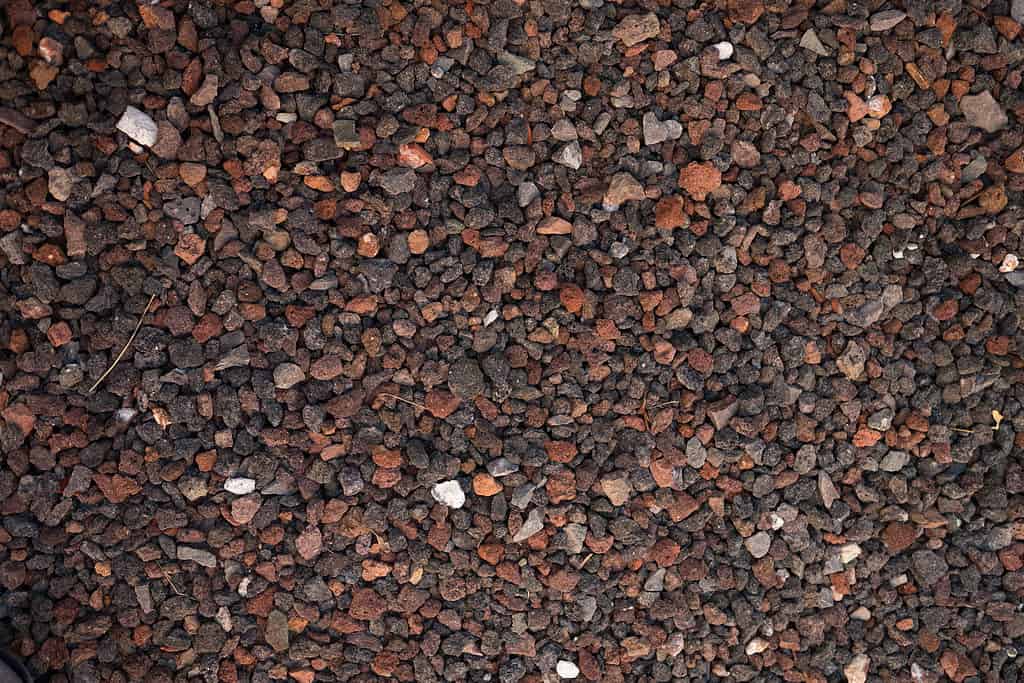
Scoria is the result of basaltic magma that contains lots of dissolved gas.
©edwsg/Shutterstock.com
25. Serpentinite
Serpentinite is a metaphoric rock. The main mineral components of it are antigorite, lizardite, and/or chrysotile. It is popular as a gemstone or decorative stone because of its deep green color layered with lighter bands in mesmerizing patterns.

When highly polished, serpentinite makes an attractive stone for ornamental purposes.
©
26. Shale
Shale is a sedimentary rock formed from grains of clay. Its color is brown with a dull red tinge to it and it has very fine grains. Shale is a very soft stone that forms in layers that will easily split apart and crumble in your hands. It will leave muddy streaks if you dip it in water and try to make a mark with it on another surface.
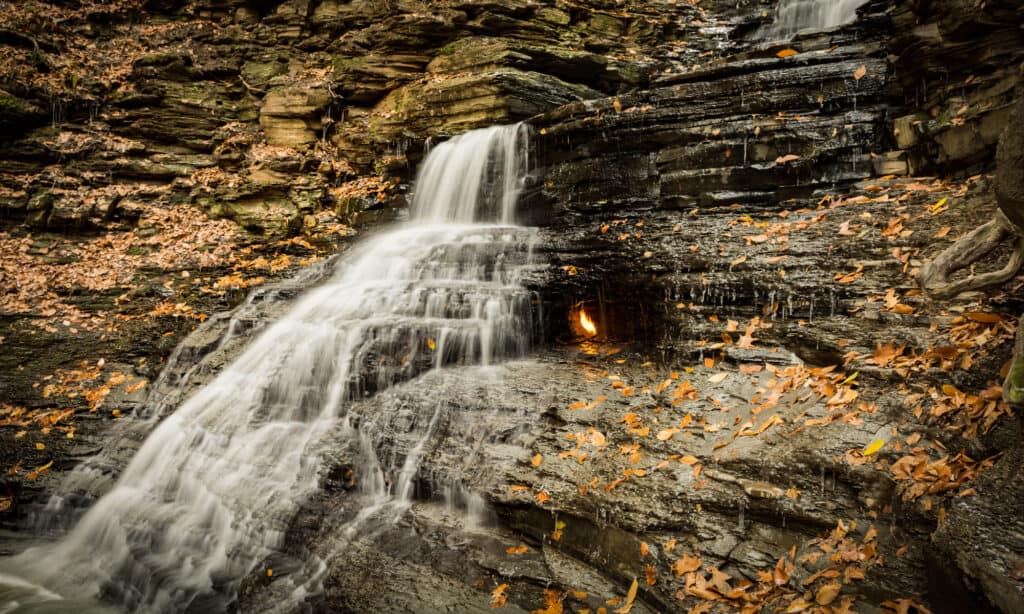
This waterfall in western New York flows over stacked layers of shale.
©Jay Ondreicka/Shutterstock.com
27. Slate
In the days before modern technology, you could find slate chalkboards in every classroom and bookbag. That use has faded with time but slate is still used by builders as a flooring and roofing material. It’s a metamorphic rock made of clay minerals. It forms in the heat and pressure found at about 6 miles deep in the earth. You can sometimes guess where a sample might be from based on its color. Various regions produce shale of gray, green, black, red, or even purple.
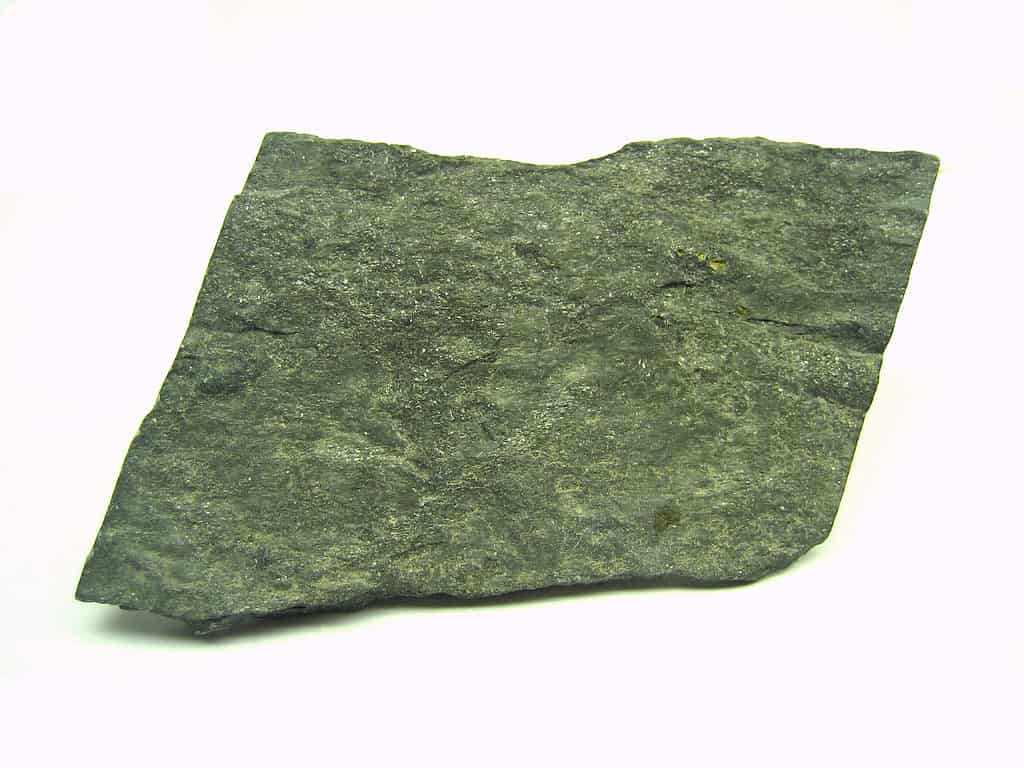
Depending on where it is mined, slate can come in a number of different colors, including green.
©
28. Syenite
Feldspar is the main mineral in syenite and forms the lighter part of the rock. Other minerals, particularly hornblende, form the dark spots in it. Syenite cools slowly underground, so it has time to form large crystals.
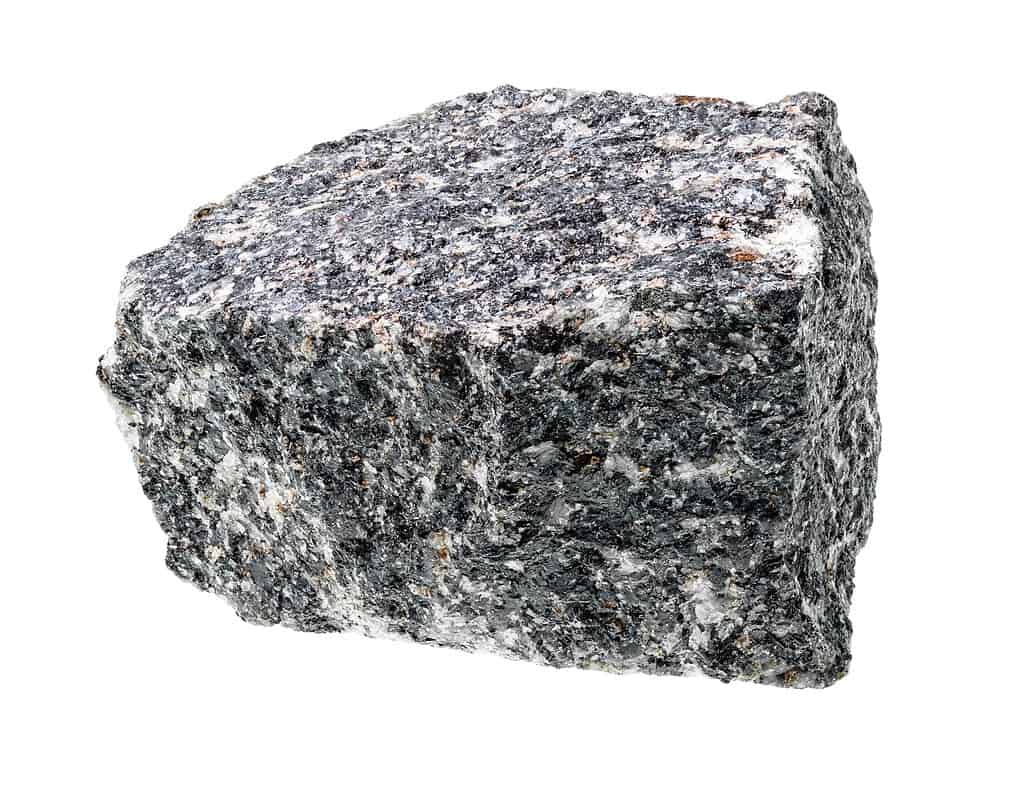
Syenite forms along subduction zones, where one tectonic plate is moving underneath another.
©KrimKate/Shutterstock.com
29. Trachyte
Trachyte forms when volcanic lava made of silica and alkali metals cools down rapidly. It is a fine-grained stone that comes in a variety of light colors. Because of its beauty and durability, it is a popular decorative construction material.
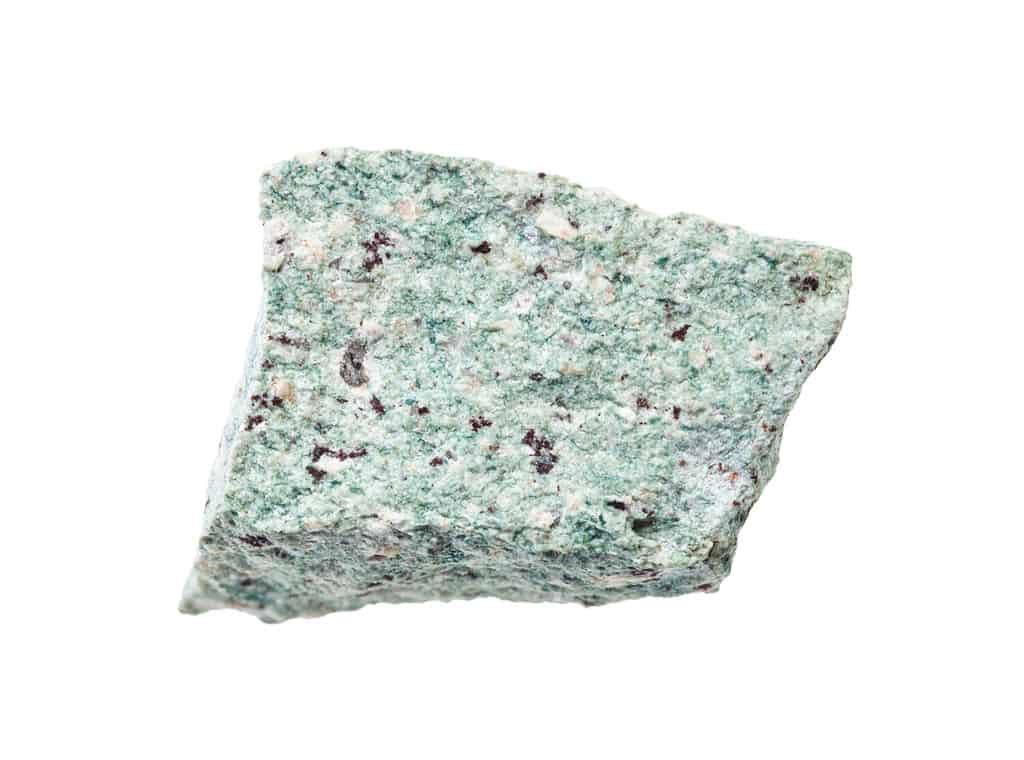
Trachyte makes a beautiful construction material.
©vvoe/Shutterstock.com
30. Tuff
Tuff is an igneous rock that forms when compacted volcanic ash solidifies. It is softer than many other kinds of rock, so it is easy to cut into building blocks. The Romans used it as a primary construction materials for their roads, aqueducts, and public buildings.
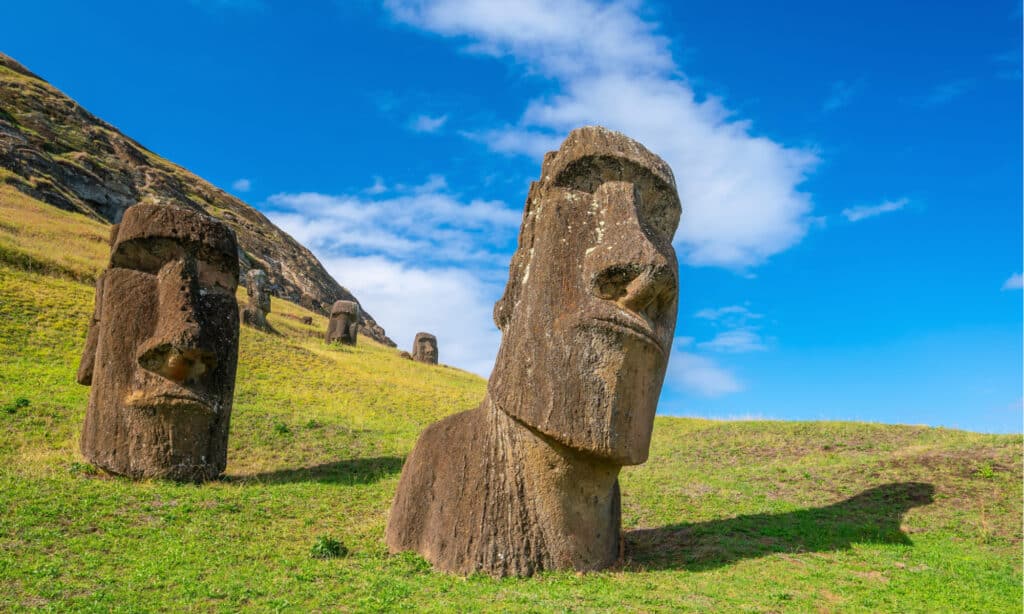
Ancient residents of Easter Island used volcanic tuff to build these enigmatic
moai.©f11photo/Shutterstock.com
How Many Kinds of Rocks Are There?
Geologists estimate anywhere from 4,500 to 5,000 types of rock are available to people on or near the Earth’s surface. Obviously, our random list of 30 barely scratches the surface. It does give you a taste, though, of the wide variety of rocks that form under different conditions. And you can see a few of the thousands of uses many of these rocks have for construction, agriculture, manufacturing, and decoration. Now, how many of those thousands of rocks can you find?
The photo featured at the top of this post is © Fokin Oleg/Shutterstock.com
Thank you for reading! Have some feedback for us? Contact the AZ Animals editorial team.



